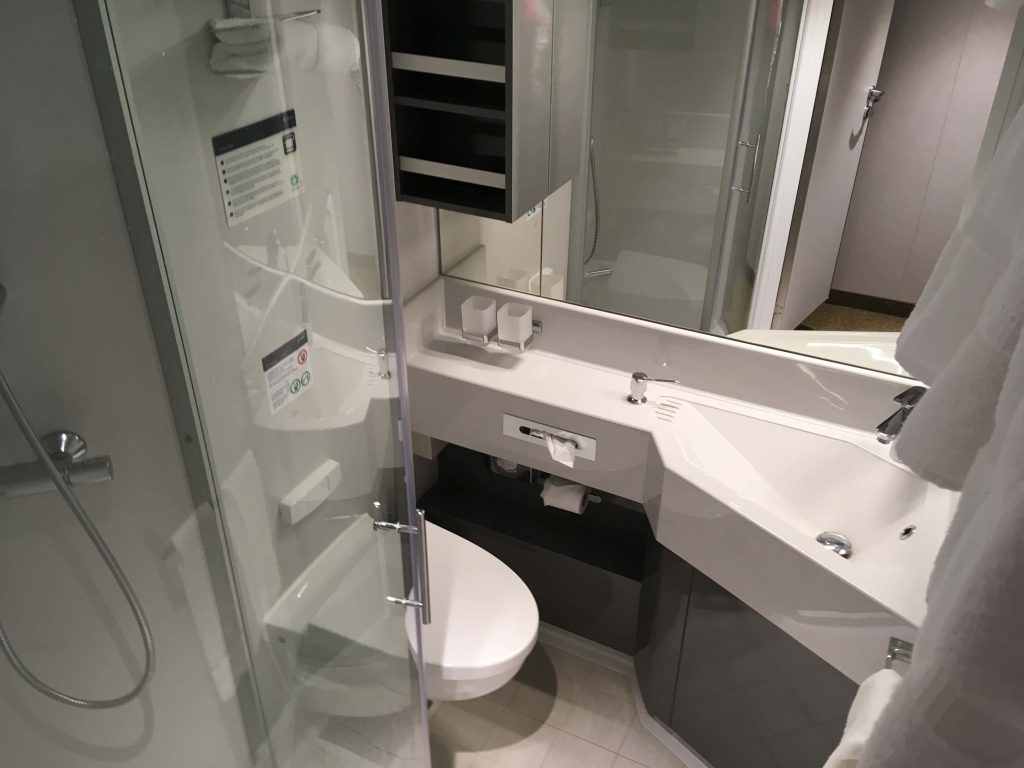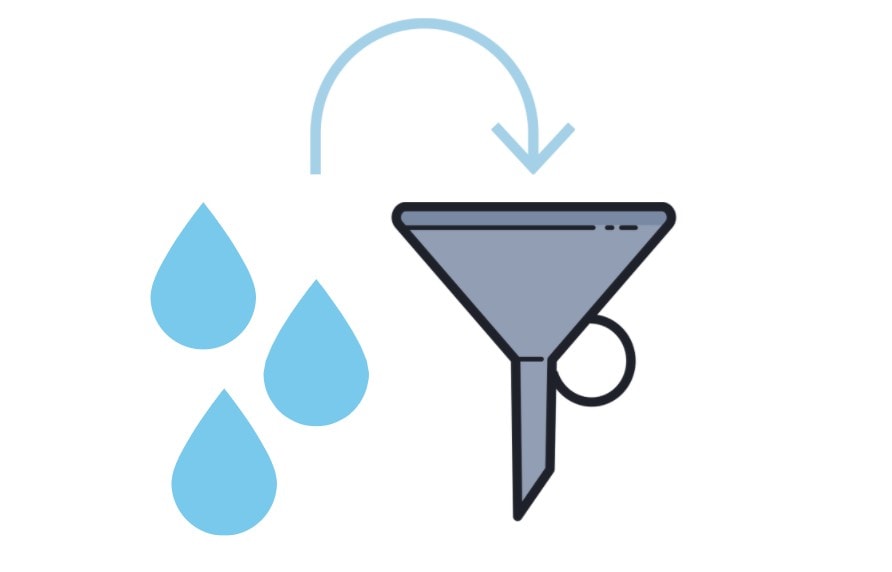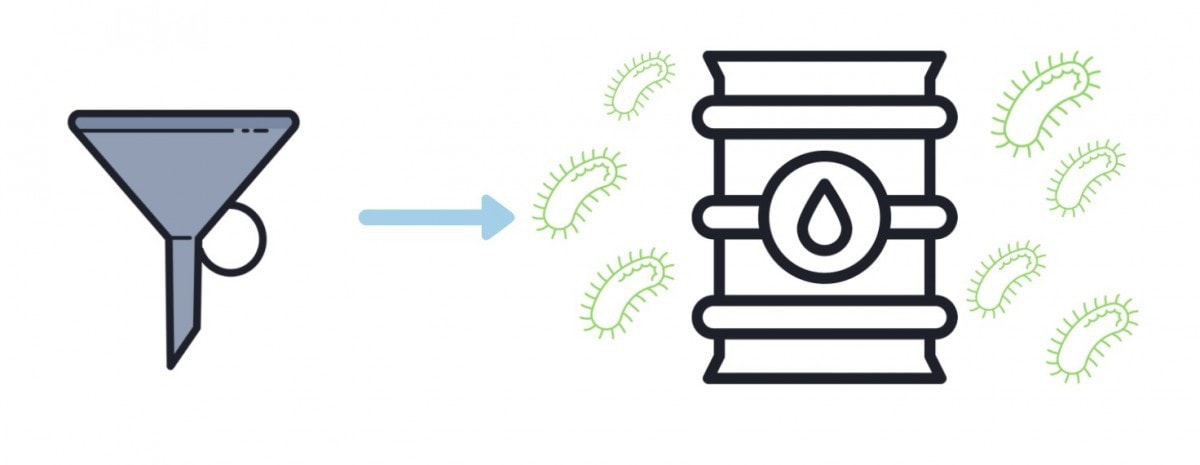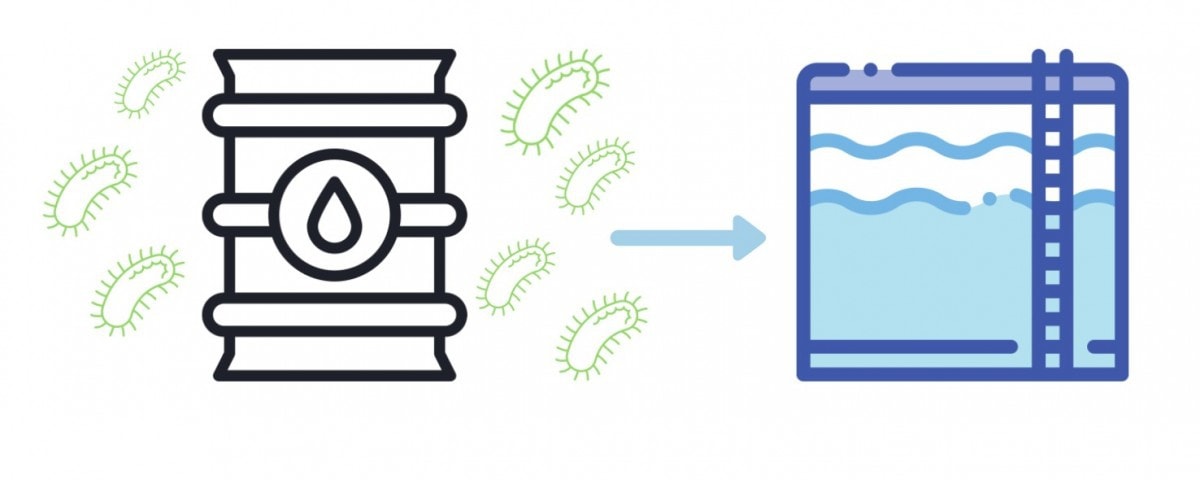If you’re considering a cruise you may be wondering what happens when you flush the toilet on a cruise ship.
I’ve been on a number of cruises to date and in this article, we will look at where sewage goes when you flush a cruise ship toilet.
What Happens When You Flush a Cruise Ship Toilet?
When a toilet is flushed on a cruise ship, the sewage travels to the onboard treatment plant. Here the waste is filtered before it enters an aeration chamber. The aeration chamber cleans the waste. It is then sterilized using UV light and released into the ocean when clean enough to do so.
Each person on a cruise uses 40-50 gallons of water per day. Reducing the amount of water used is a high priority for all cruise ships and as a result even the toilets are designed to save water.
1. The Guest Flushes The Toilet
The process starts when the guest flushes the toilet after using it.
Cruise ship toilets use a suction system, which is designed to reduce the amount of water needed in order to complete the flush.
It might not seem as though this is saving a lot of water, but if you were to multiply the saving by the number of guests and number of times they use the toilet per day, this saving can be HUGE.
How do Cruise Ship Toilets Work?
There is water in the bowl of the toilet prior to it being used but there is no extra water that flushes down the waste, instead, the waste is sucked down.
Suction toilets make perfect sense on cruise ships, as it reduces the amount of water needed considerably.
I remember cruising as a child and being terrified of the loud suction sound of the toilet. Some cruise ships also have automatic sensors that flush the toilet when the guest stands which was one of the reasons I was so afraid of the loud noise. It went off once when I was still sat down and it scared me so much!
How do You Flush a Cruise Ship Toilet?
The flush button on a cruise ship toilet is usually located behind the lid as you can see in the photo above. This is so that the guest using the toilet has to put down the seat before they can flush the toilet.
Nothing awful will happen if you manage to flush the toilet with the seat still up. You’re not going to get sucked down the toilet, but the idea is to only flush it when the toilet lid is down.
On some older ships, you may find that there is a delay between pressing the button and the flush operating.
I took a cruise on a cruise ship from the 1980s and you could press the flush button, wash your hands and leave the bathroom before it actually flushed. Not a problem, just confusing at first!
NOTE: It’s important to remember that cruise ship toilets cannot handle things like tampons or wipes. These will block the cruise ship toilet and as the toilets are all linked together, if you block your toilet, it’s likely to affect other cabins.
The following items cannot be put in cruise ship toilets:
- Wipes
- Paper towels (kitchen towels for example), toilet paper is fine!
- Condoms (no idea why anybody would do this, but DON’T)
- Tampons/Pads (This one can be a bit strange but tampons have to be wrapped up and placed in the bin as they can easily break the systems. Cruise lines provide sanitary bags for this purpose).
- Cotton Swabs/Pads
- Any Chemicals or Toiletries
Generally speaking, if it isn’t a natural material or tissue paper, don’t flush it down a cruise ship toilet.
2. The Sewage Enters The Treatment Plant
Cruise ships have sewage treatment plants onboard, where they treat the waste. The sewage that comes from the toilets is what is called black water.
Gray water doesn’t have to go through the same treatments as black water, although it is still filtered before being released.
Some gray water is mixed with the black water in order help the black water cleaning process.
What is the difference between black water and gray water?
The difference between black water and gray water, is that it comes from a different place. Black water comes from toilets on board a ship and gray water comes from the onboard laundry, showers, and kitchens.
Common places for black water to come from include:
- Toilets
Common places for gray water to come from include:
- Laundry
- Showers
- Sinks
- Kitchens
Gray water is ‘cleaner’ than black water and is unlikely to have anything nasty or dangerous lurking within it.
3. Waste is Filtered in The Sewage Treatment Facility
When the waste first enters the plant it goes though a filter.
This is a very basic filter which filters out any parts which wouldn’t be suitable to be sterilized and released.
The parts that don’t go through the filter are then stored and taken off onto land when the ship docks.
4. Waste Goes Into an Aeration Chamber
An aeration chamber is a tank where bacteria are used to biodegrade the waste matter. The bacteria need oxygen to function, so the chamber has air blown into it.
Wastewater aeration is the process of adding air into wastewater to allow aerobic bio-degradation of the pollutant components. It is an integral part of most biological wastewater treatment systems. Unlike chemical treatment which uses chemicals to react and stabilize contaminants in the wastewater stream, biological treatment uses microorganisms that occur naturally in wastewater to degrade wastewater contaminants.
source
The microbes within the water feed on the waste and this is basically a fast-forwarded form of decomposition. The cruise line has to be very careful that it doesn’t do anything to affect how these bacteria work, this is why only certain cleaning chemicals are used when cleaning onboard toilets.
5. Waste Enters a Settlement Chamber
In the settlement chamber, the waste is able to settle and separate. The thicker dirtier part sinks to the bottom as the water rises to the top.
The part that falls to the bottom is sent back to the start of the process to go through the aeration chamber again.
6. Water Sterilized
At this point, the water is usually sterilized by the cruise line. The most common way to do this is with UV light, although some lines do this differently.
Chlorine isn’t usually used as this could be a risk to marine life.
After being sterilized, the water is considered to be clean enough to dispose of. It is stored in tanks on the ship until the ship is ready to dispose of it.
There are tests that are carried out by the cruise line in order to make sure that the water is of a high enough standard to do this.
7. Water Released into The Ocean
At this point, the water is clean enough to be released into the ocean. It’s arguably a lot cleaner than a lot of the other water in the ocean!
There are many different regulations about how far a cruise ship has to be from land and at what speed they must be sailing for the sewage to be disposed of. A common distance is 12 nautical miles.
Many cruise lines go above and beyond the minimum requirements.
Was it Always Like This?
In the past, cruise lines used to be able to just release sewage directly into the sea whenever they wanted to.
This wasn’t such a big problem as there weren’t as many huge cruise ships as there are today. Regulations related to cruise ship waste is constantly evolving and being updated.
What About Laid up Ships?
The need to go to out to sea in order to release wastewater, is one of the main reasons that cruise ships when laid up in 2020 still had to sail and couldn’t turn off.
To find out more about what happens to ships in cold layup, check out the video below:
To conclude: When you flush a toilet on a cruise ship the wastewater goes to the treatment plant on board. It is cleaned and released when safe to do so.

Free Insiders Cruise Line Guide
Ever wondered how the mainstream cruise lines compare? Cruise lines won’t tell you this, but I will.
This FREE guide shows you everything you need to know to find your perfect cruise line.





